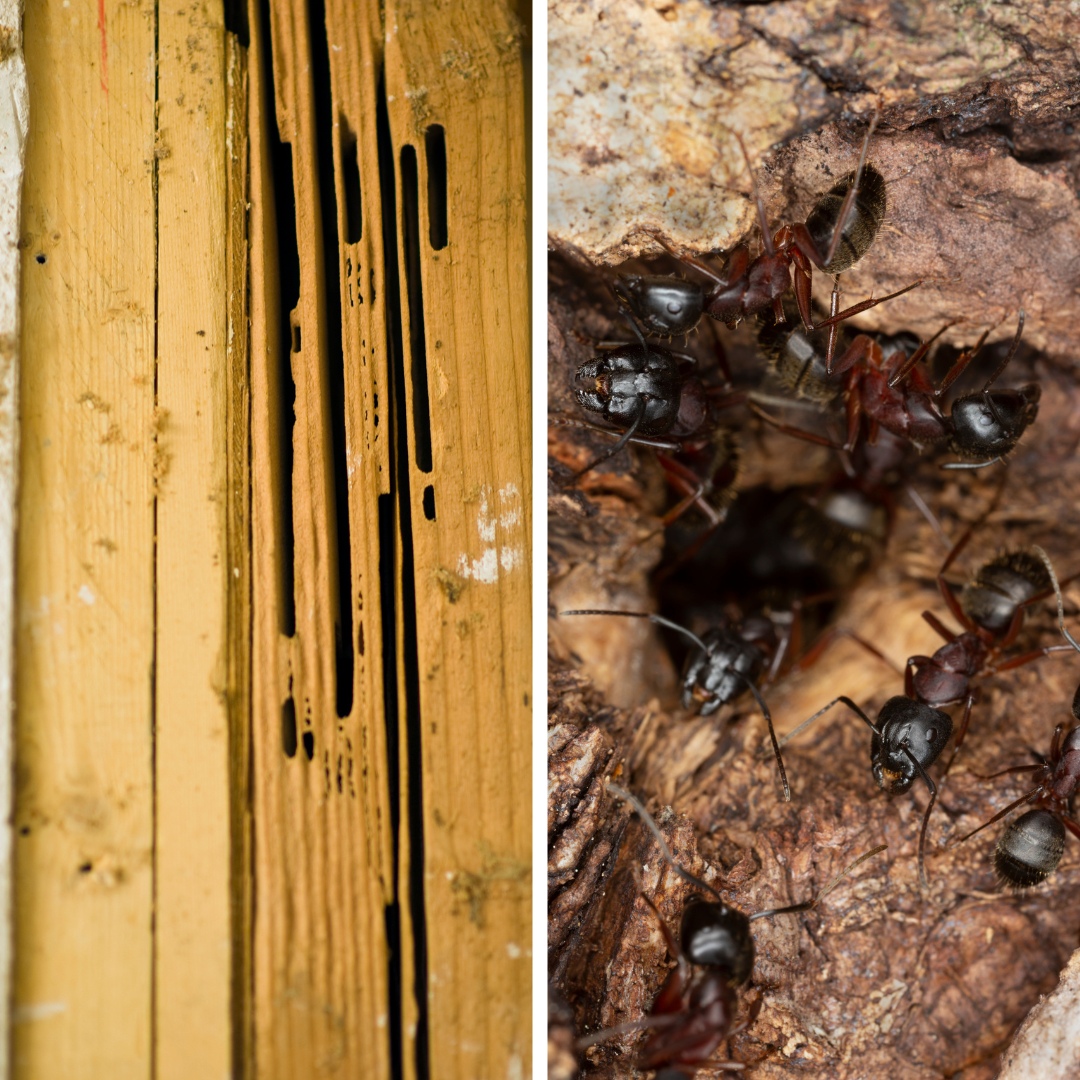Carpenter ants are often misidentified as wood-eating termites. Luckily carpenter ants don’t eat wood and in Minnesota, termites are very rare to find
Share This Page!
Carpenter Ant Behavior

Carpenter Ant Tunnels and Galleries
Carpenter ants do not eat wood to survive like termites. Carpenter ants only chew through wood meaning they never digest it. The wood they chew is moist and soft making it easy for them to chew tunnels and galleries. The wood is often water-damaged or rotting. The narrow tunnels they make are used to store their eggs, larvae, and food. The queen ant and 90% of the worker ants also spend their entire lives inside the wood. Only around 10% of the ants in the colony leave the nest to forage for food. Structural damage caused by carpenter ants is less severe than termite damage. The water seeping into the wood that is attracting the ants will often cause significant structural damage faster than the ants.

Signs of Carpenter Ants
Because carpenter ants chew wood instead of eating it they spit it out. What they spit out is known as frass. Seeing piles of frass around trees or inside homes is a great way to identify a carpenter ant infestation. The frass can be compared to sawdust. Except instead of regular sawdust frass has a mixture of carpenter ant food inside the piles. It’s common to find pieces of insects, seeds, and nuts inside the frass.
Are carpenter ants and termites the same thing?

Carpenter Ant and Termite Identification
Carpenter ants are not termites. Many people misidentify winged carpenter ants with winged termites. Termite bodies are straighter and rectangular-shaped. A carpenter ant’s body is divided into three well-defined sections; the head, thorax, and abdomen. Instead of looking like a rectangle, their bodies are shaped like an “8”. Some other key differences between the two are the antennas and wings. Termites have much shorter straight antennas. Winged and worker carpenter ants have longer elbowed antennas that make close to 90-degree angles. Termites and carpenter ants both have two sets of wings. The wings of termites are identical and all the same, size while carpenter ants’ wings are different sizes.

Termite Range Map
Termites thrive in hot and humid climates. In the Northern United States winter makes it difficult for termites to thrive. Carpenter ants on the other hand can hibernate and survive winters by digging below the frost line or nesting inside homes and trees. Similar to carpenter ants termites are also attracted to water-damaged and rotting wood. This is why they are so common in states with high humidity. If termites are found in Minnesota or other Northern states they almost always hitchhike their way on furniture, food, or other imported products.
For help with identifying termites visit the Environmental Protection Agency (EPA) website
Carpenter ants can be found all across the Twin Cities and Minnesota
Anoka|Apple Valley|Bloomington|Burnsville|Coon Rapids|Champlin|Chanhassen|Deephaven| Delano|Eagan|Eden Prairie|Edina|Elk River|Excelsior|Independence|Lino Lakes|Maple Grove|Maple Plain|Medina|Minneapolis| Minnetonka|Minnetrista|New Brighton|North Oaks|Orono|Prior Lake|Plymouth|Ramsey| Rogers|Shoreview|Shorewood|Stillwater|St. Louis Park|St. Paul|Victoria|White Bear Lake|Wayzata|Woodbury|




